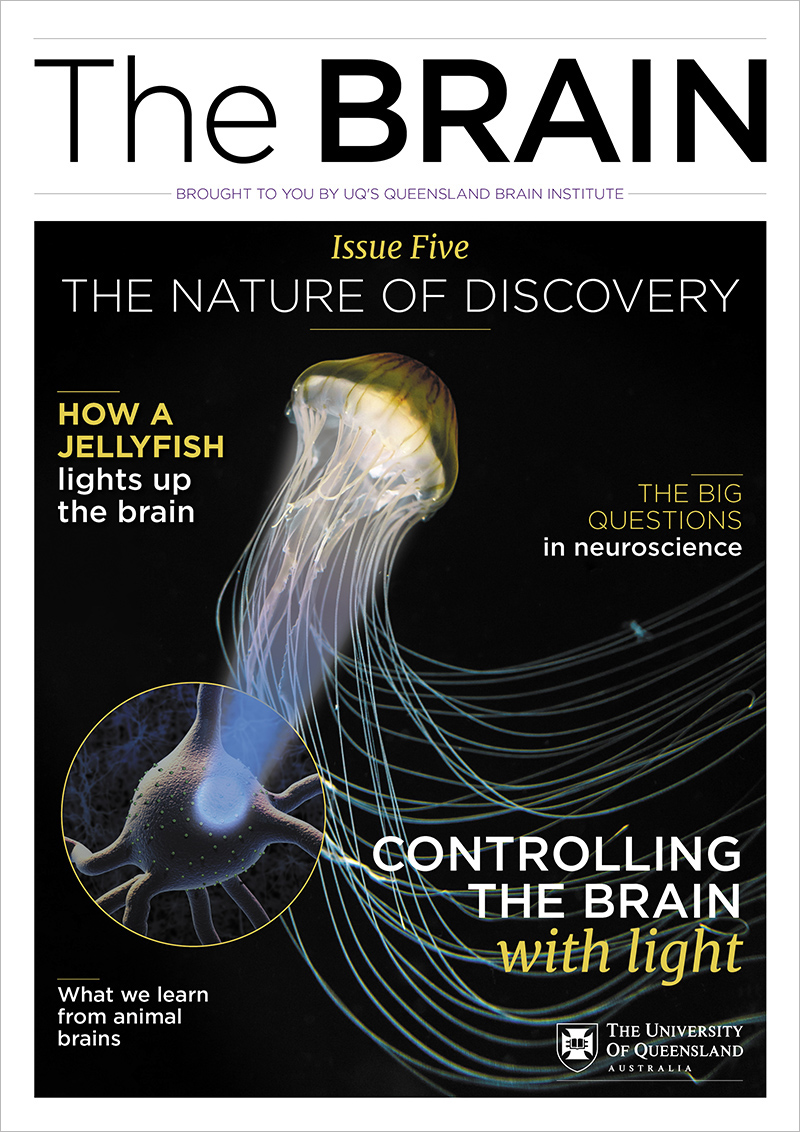Making sense of all the visual information we receive every second we're awake uses about a quarter of the brain's processing power at any one time. The human eye, our primary sensory organ and source of information, is often seen as highly advanced, so it might be surprising to learn that we may have only a quarter of the colour vision capability of a mantis shrimp and are at least six times slower in visual reaction time than a fly.
Mantis shrimp have the most complex retinal visual system known to science, says Professor Justin Marshall, from UQ's Queensland Brain Institute, an expert in animal vision. The crustaceans use polarised light for attracting a mate, with only males reflecting this light. Mantis shrimp also see colour and have 12 input channels, or sensitivities, in their eyes for this. Humans only have red, green and blue, and yet we can distinguish millions of different colours.
"How mantis shrimps use colour remains shrouded in mystery," says Professor Marshall, whose research has uncovered these amazing findings. "At the moment, we understand more about how their vision system works than how they use it. There is a lot of exciting research to come."
Many animals out-perform humans in some form of vision and some, including the octopus, can see forms of light that humans cannot. Octopuses also see polarised light, a form of light that humans only see with the aid of sunglasses and other optical devices. Surprisingly, they are also completely colour-blind and seem to have swapped colour for polarised information from the world around them. How do they manage their feats of amazing camouflage, blending perfectly with the ocean floor? And why do some, such as the blue-ringed octopus, use colours they don’t see themselves?
These cephalopods are very sensitive to contrast patterns and even the texture of their surrounds; they can mimic their environment almost perfectly and have evolved to ‘know’ the colour of the ocean bed. The iridescent blue of the tiny blue-ringed octopus is likely there to warn animals that can see colour that its bite is laden with potentially lethal toxins.
"Instead of colour, cephalopods have developed polarisation vision for tasks that mostly remain obscure to us," says Professor Marshall. "Some certainly communicate with polarised light but the meanings of those messages are yet to be decoded.”
Among the vertebrates, even the goldfish with its tiny brain can detect more colours than a human, and it can see ultraviolet (UV) wavelengths, a range of light that humans cannot normally see. Many reef fish, birds, lizards and mantis shrimp use UV light, some for covert communication among themselves, most likely for attracting and choosing mates.
Studying how these small-brained animals can see and process such complex visual information helps us understand more about how our brains process our visual world. Scientists, inspired by this vision in nature, are also working on developing better underwater navigation and camera technologies.

